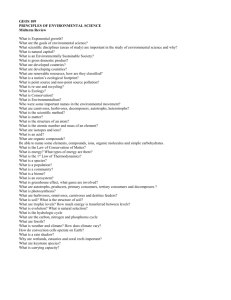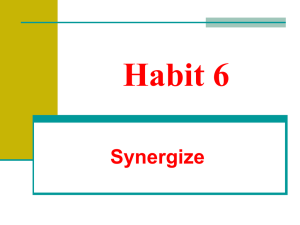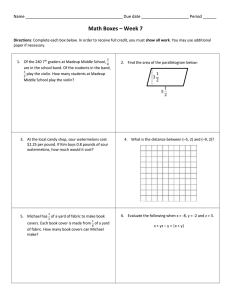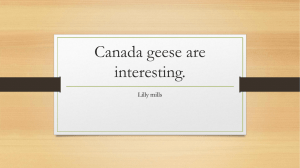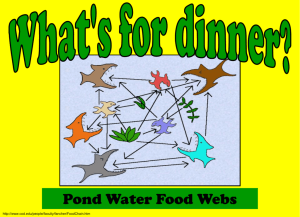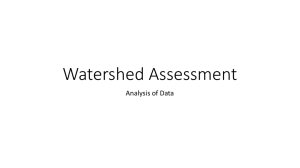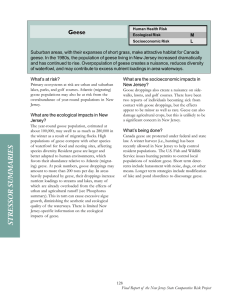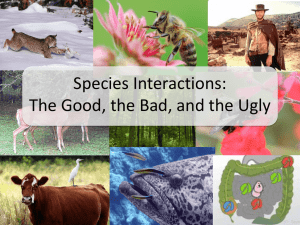Name: Keystone Quiz 9: Ecology Some deep
advertisement
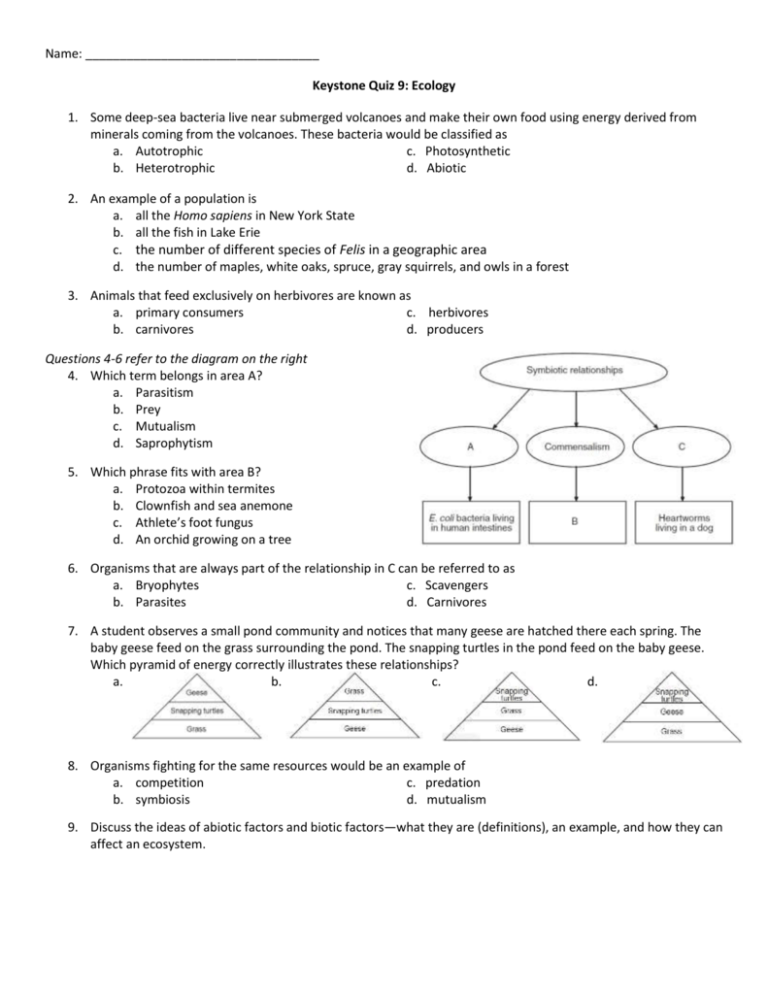
Name: __________________________________ Keystone Quiz 9: Ecology 1. Some deep-sea bacteria live near submerged volcanoes and make their own food using energy derived from minerals coming from the volcanoes. These bacteria would be classified as a. Autotrophic c. Photosynthetic b. Heterotrophic d. Abiotic 2. An example of a population is a. all the Homo sapiens in New York State b. all the fish in Lake Erie c. the number of different species of Felis in a geographic area d. the number of maples, white oaks, spruce, gray squirrels, and owls in a forest 3. Animals that feed exclusively on herbivores are known as a. primary consumers c. herbivores b. carnivores d. producers Questions 4-6 refer to the diagram on the right 4. Which term belongs in area A? a. Parasitism b. Prey c. Mutualism d. Saprophytism 5. Which phrase fits with area B? a. Protozoa within termites b. Clownfish and sea anemone c. Athlete’s foot fungus d. An orchid growing on a tree 6. Organisms that are always part of the relationship in C can be referred to as a. Bryophytes c. Scavengers b. Parasites d. Carnivores 7. A student observes a small pond community and notices that many geese are hatched there each spring. The baby geese feed on the grass surrounding the pond. The snapping turtles in the pond feed on the baby geese. Which pyramid of energy correctly illustrates these relationships? a. b. c. d. 8. Organisms fighting for the same resources would be an example of a. competition c. predation b. symbiosis d. mutualism 9. Discuss the ideas of abiotic factors and biotic factors—what they are (definitions), an example, and how they can affect an ecosystem.
